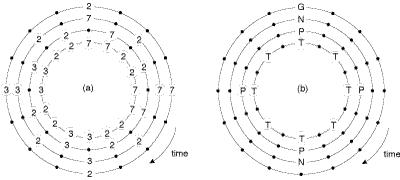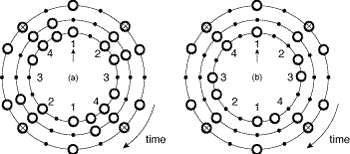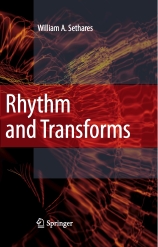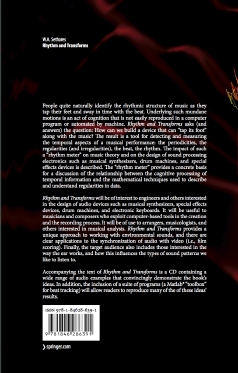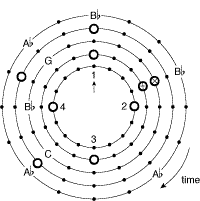
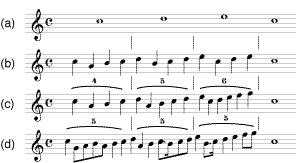
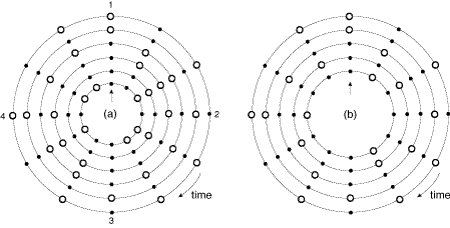
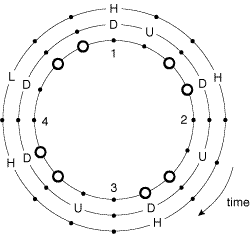

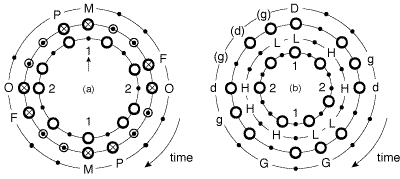
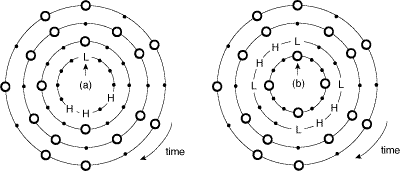
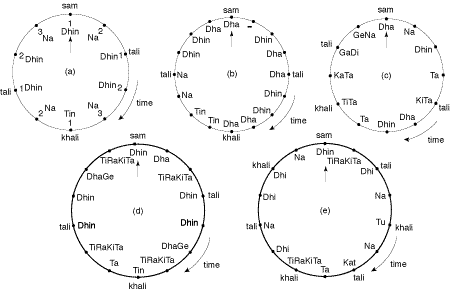
- (Poly32-1200.mp3 0:10) The three vs. two polyrhythm is performed at a rate of 1.2 sec per cycle. Typically, the cycle is heard as a single perceptual unit rather than as two independent time cycles.
- (Poly32-120.mp3 0:05) The three vs. two polyrhythm is performed at a rate of 120 ms per cycle. The rhythm has become a rapid jangling.
- (Poly32-12.mp3 0:05) The three vs. two polyrhythm is performed at a rate of 12 ms per cycle. The rhythm has become pitched, and the two rates are individually perceptible as two notes a fifth apart.
- (Poly32-12000.mp3 0:30) The three vs. two polyrhythm is performed at a rate of 12 sec per cycle. All rhythmic feel is lost.
- (Poly32b.mp3 0:15) The three vs. two polyrhythm performed at a rate of 1.0 sec per cycle. Typically, the cycle is heard as a single perceptual unit rather than as two independent time cycles.
- (Poly43.mp3 0:20) The four vs. three polyrhythm is performed at a rate of 2.0 sec per cycle.
- (Poly52.mp3 0:20) The five vs. two polyrhythm is performed at a rate of 2.0 sec per cycle.
- (Poly53.mp3 0:20) The five vs. three polyrhythm is performed at a rate of 2.0 sec per cycle.
- (Poly54.mp3 0:20) The five vs. four polyrhythm is performed at a rate of 2.0 sec per cycle.
- (Poly65.mp3 0:20) The six vs. five polyrhythm is performed at a rate of 2.5 sec per cycle


